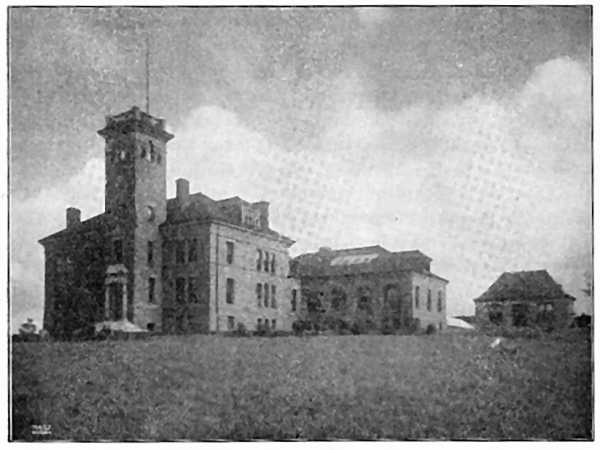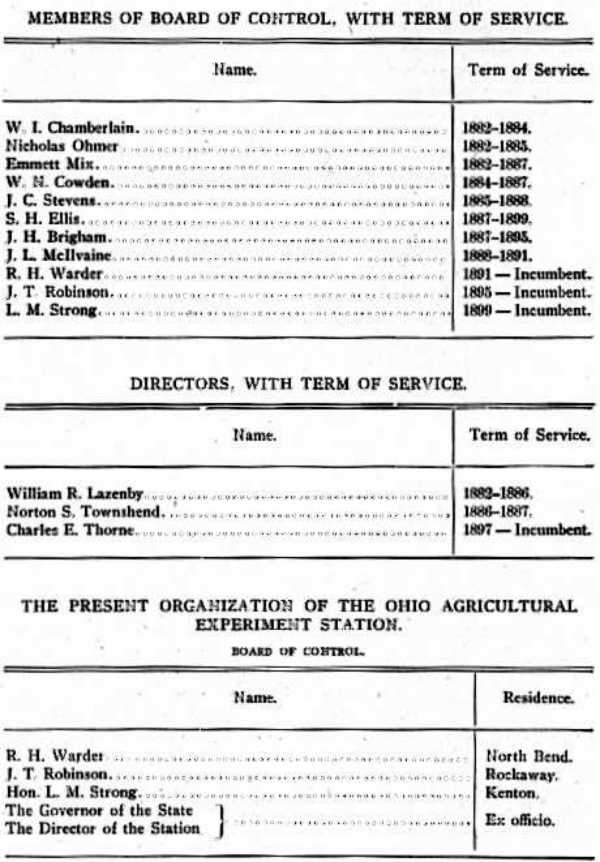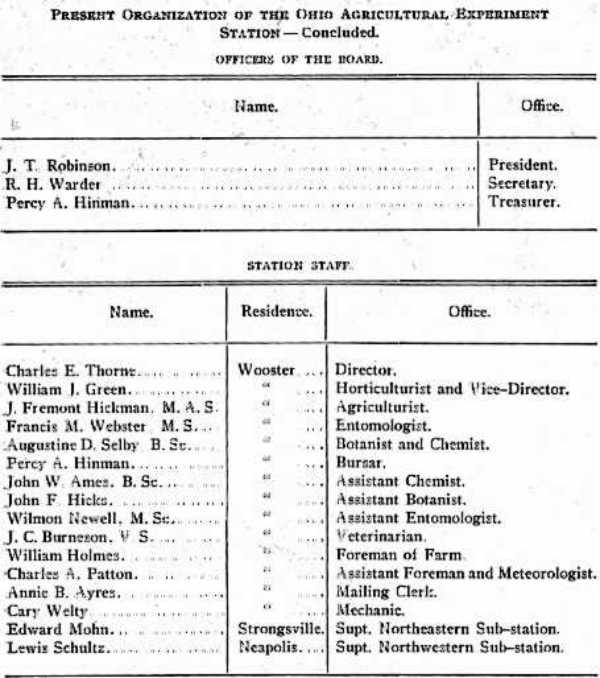STATION AT WOOSTER

OHIO AGRICULTURAL EXPERIMENT STATION.
Main Building and Laboratories.
|
THE Ohio Agricultural Experiment Station was established by an act of the General Assembly, passed April 17, 1882; its object being, as recited in this act, "for the benefit of the interests of practical and scientific agriculture, and for the development of the vast agricultural resources of the State." the station never had any organic connection with the State University, but it was at first located at that institution, a few acres of land being set apart for its sue and the Professor of Horticulture in the University being made its first Director, this office being transferred to the Professor of Agriculture at a later date. In 1887 the National Congress passed an act now known as "the Hatch act," appropriating $15,000 annually to each state and territory for the establishment of Agricultural Experiment Stations, these stations to be organized in connection with the colleges which had been or might be established under what is popularly known as the "agricultural college act of 1862," except that, in states which had previously established agricultural experiment stations separate from such colleges, permission was given to devote the appropriation to such separate stations. This course was followed in Ohio, and the Experiment Station was re-organized, Charles E. Thorne being made Director, and the major part of the University farm being assigned to the use of the Station. The rapid growth of the City of Columbus around the University soon showed that the time must come when its lands would become to valuable to be used for purposes of agriculture, and the permanent and largely increased income now assured the Station made it seem necessary that it should be so established that its work might be continued indefinitely without interruption. The General Assembly therefore passed an act authorizing the several counties of the state to issue bonds for the purchase of lands and the erection of buildings for the use of the Station and to bid for its location. Several counties immediately took action under this law, and the offer of $85,000, made by Wayne County, was accepted by the Board of Control of the Station; the bonds were sold, several adjoining farms, lying near the city of Wooster, were purchased and the erection of buildings was at once commenced. A dissatisfied citizen of Wayne County afterward brought suit to contest the constitutionality of the law under which the county had thus bonded itself. The common pleas and circuit courts both declared the law valid, but these decisions were reversed in the Supreme court, on the ground that the people of a part of the state were taxed for the support of an institution intended for the benefit of the whole state, and it was held that the incidental benefits derived from the proximity of the Station were no justification for the extra taxation for its support. This decision seriously interrupted the work of the Station, but after about two years the General Assembly assumed the payment of the bonds and has since made provision for the completion of the buildings necessary for the Station work. These comprise the Administration Building and the Chemical Lab-oratory, shown in the illustration, which is built in fire proof construction of the yellowish sandstone found on the Station farm; a block of greenhouses, 80x115 feet, with stone offices in front; a small biological laboratory; four large barns and a number of smaller ones; a fully equipped creamery, and seven dwellings. The station owns 470 acres of land, in which it has laid about 26 miles of drains. It has planted about 20 acres in orchards, in which more than 700 varieties of fruit are now bearing. It was about 70 pure bread cattle, of six different breeds, and similar flocks of pure bred sheep. The work of the Station has been organized in four different departments: (1) Agriculture, (2) Horticulture, (3) Entomology, and (4) Botany and Chemistry, each department being in charge of a specialist. The last General Assembly charged the Station in addition with an investigation of tuberculosis and other diseases of cattle, and made its Board of Control the agency for the execution of a law providing for the inspection of orchards and nurseries against certain insect pests and plant diseases. This work has been organized as a separate department, independent of the Experiment Station.
|
Return to Early Institutions
Go to Main Page

